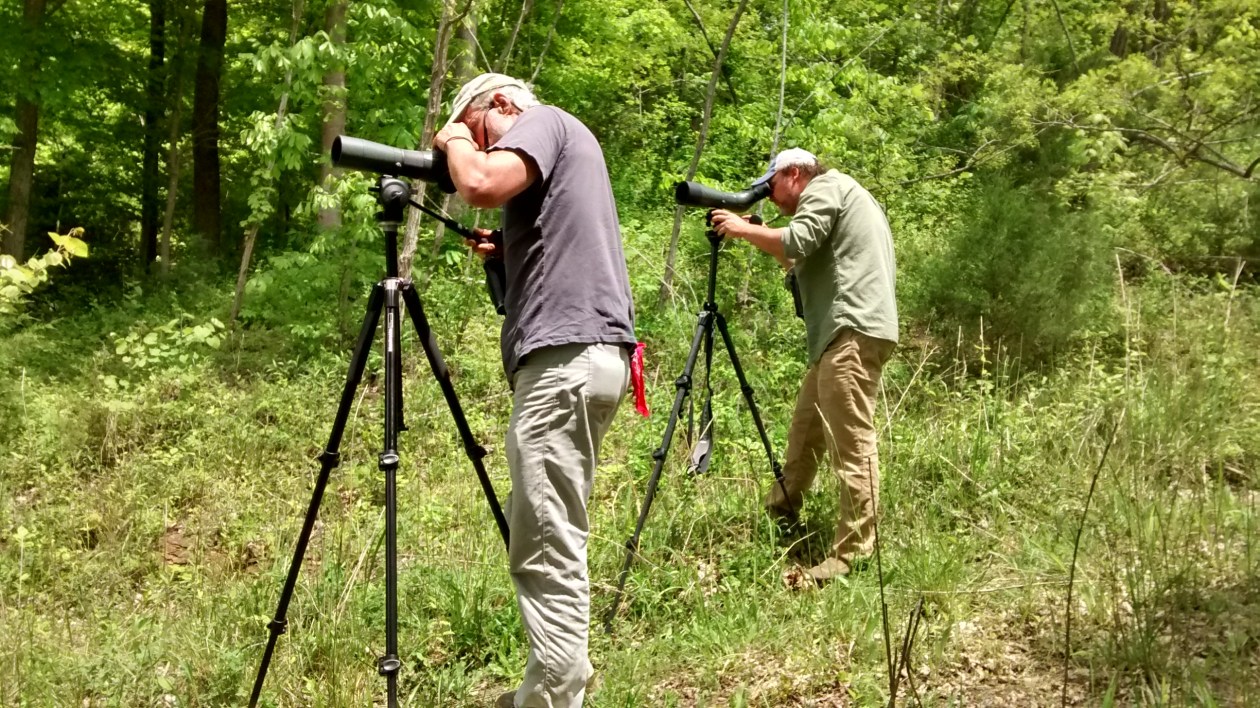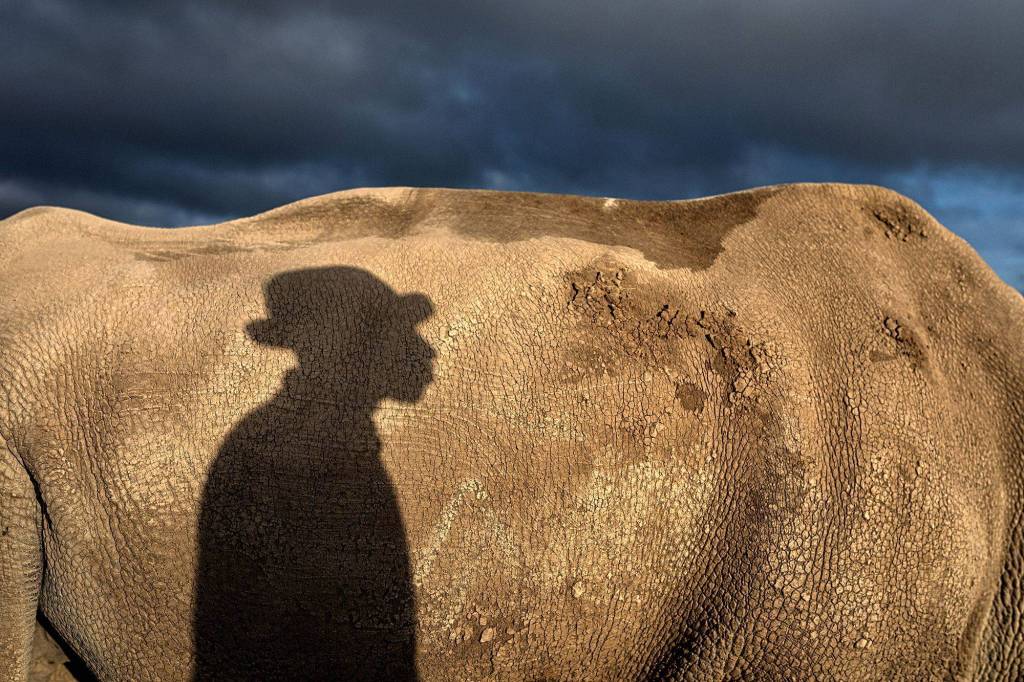I was working on a story about tracking bog turtles at a Nature Conservancy preserve in the southern Appalachians, the type of story I often cover in my work. As I was concluding an interview with my colleagues, they made a request: Don’t mention the name of the preserve in my story.
Usually, highlighting preserves is an important part of the conservation story. Not in this case. Naming the preserve could harm the conservation effort. It could put turtles at risk.
By naming a geographical location, I could lead poachers to the preserve. There’s a significant market in bog turtles, so much so that poachers have even stolen them from zoos. They are skilled at finding the animals. I didn’t want my conservation story to become a roadmap for poachers.
Sharing cool wildlife sightings has become an important component of citizen science efforts. We post wildlife photos on iNaturalist, we participate in backyard bird counts, you report unusual sightings to wildlife agencies. These activities can play important roles in conservation, enabling researchers to track larger trends.
But there are times when sharing your sightings could put wildlife at risk. Instead of aiding conservation, you could be leading poachers to endangered species. When should you share and when do you stay quiet?

Secret Spots
In outdoor recreation, there’s a long tradition of keeping special spots secret. Say you locate a spectacular fishing hole while out on a hike. You fear that if word gets out, it will be overrun with crowds, the banks will be covered in litter and your slice of paradise will be gone forever. I grew up with this as an unspoken rule: You find outdoor nirvana, you keep your mouth shut.
But there’s a flip side, because humans are naturally social and you also want to share experiences with others. Outdoor pursuits are considerably less fun if you don’t share them in some way.
This has long been an underlying tension in many forms of outdoor recreation. Share or stay quiet?

This debate has become more pronounced with social media. And as is so often the case, social media arguments tend to be dominated by absurd extremes. One side says that the best nature and outdoor experiences are those you find on your own, a reward for developing field skills and persistence. Anything less is basically cheating.
The other extreme posits that not sharing locations publicly is elitist, and example of outdoor “gatekeeping.” This argument says that posting a photo of a beautiful waterfall or a bird sighting without a location is restricting outdoor access for those who may lack knowledge and connections.
The reality, of course, is found somewhere in the middle. I learned where to go fishing, hunting and wildlife watching first from family and adult mentors, and then from an ever-growing circle of friends and acquaintances. As I travel around, anglers, mammal watchers and naturalists have often freely given me great spots to check out – and I return the favor.
On the flip side, I’m not going to post GPS coordinates of my favorite native trout streams and mountain lion sightings on Facebook. I’m just not. I’ll share with trusted friends. But it’s not going to be public. It’s my call. It’s your call.
These same judgment calls come into play when deciding whether to share or stay quiet on wildlife sightings. Many of these decisions are highly personal and lie in the realm of outdoor ethics, not conservation.
But sometimes, sharing a wildlife sighting can have much bigger stakes.

When A Photo Kills the Rhino
My wife and I had spent the morning driving around Mokala National Park in South Africa’s Northern Cape, spotting wildlife just about everywhere we looked. This park is used as a breeding refuge for many rare hoofed mammals. You can drive around on your own, without a guide, which we did.
We pulled into the visitor center, jazzed about our success in seeing many of the park’s notable fauna. We were met by a park manager who shared our enthusiasm. We rattled off our sightings. Kudu, roan, Cape buffalo, and best of all, three white rhinos. We began detailing the rhinos.
The park manager’s smile disappeared. He looked nervously around. I had that feeling you get when you have just inadvertently offended the host at the party. Was it something we said?
Rhinos. That’s what we said wrong. Because discussing rhinos could mean dead rhinos.

It’s hardly a secret that rhinos of all species face intense poaching pressure. When we visited South Africa, the price of rhino horn had become so high that poachers were operating in highly organized crime networks. This could include posing as tourists to obtain rhino location information.
From the park manager’s perspective, we could be assisting poachers. A poacher could be listening in on our conversation. Discussing rhino sightings was off limits.
This extends to posting rhino photos on social media. Poachers can scan Facebook and Instagram for rhino and elephant sightings. Many photos have data embedded that enable the poacher to determine exact spots. It is believed this has helped them kill a number of animals in the famous Kruger National Park, according to an ABC News story titled, “Selfie-taking tourists are putting endangered species at risk.”

Reasonable people can debate the ethics of sharing the location of a favorite backcountry lake. Whatever your take, hopefully we can agree that you should not be posting photos that result in dead rhinos.
Conservationists suggest steps to take to reduce the risk. Don’t name where you saw the endangered critter. Turn off location metadata on your iPhone. For wildlife heavily targeted by poachers – rhinos, pangolins, tigers, elephants – think carefully before posting at all.
Perhaps you enjoy watching wildlife at your local park and recording sightings on iNaturalist. Even then, there are instances when it’s far better for wildlife to stay quiet.

Birds and Herps
Unlike anglers, birders tend to share sightings. If a rare bird shows up in North America, you can bet it’s going to be posted on Facebook groups and listservs and passed on by word of mouth. A Stellar’s sea eagle is spotted in Maine (as happened last year), and within a few days birders from around the country have converged on the spot. This is part of the fun of birding.
Birding has become a mainstream activity. Birds, at least in North America, are generally well protected. If you put the word out about a snowy owl you’ve seen, the odds are very low that someone is going to go poach it.
As birders branch out into other forms of wildlife watching, they might assume the same etiquette applies. But this isn’t always the case. Especially for reptiles.

Reptile trafficking for the pet trade is a major illegal industry, one that doesn’t get the attention of rhino poaching but is nonetheless a major conservation threat in many parts of the world. Posting the locations of where you saw a snake or turtle may lead to “collectors” targeting them.
Field herping is the activity of finding reptiles and amphibians in the field, a hobby very similar to birding. Unlike birders, field herpers are extremely secretive about sightings. As Mike Pingleton and Joshua Holbrook note in their excellent book, The Field Herping Guide, in the past the line between field herpers, personal collectors and commercial reptile harvesters was often quite blurry. All loved searching for reptiles.
Now, though, there’s a recognition among responsible field herpers that collecting puts reptile populations at risk. Still, it can be difficult to determine who the poachers are. As Holbrook and Pingleton write, “Unfortunately, it is easy for the bad guys to blend in with other field herpers, and they have become experts at harvesting information, befriending themselves with less-than-wary people, and even creating false online identities to work behind. As a result, established field herpers are very wary of others.”

This is why my colleagues didn’t want me to share the name of the preserve with bog turtles. Reptile poachers are out there and they are also operating under the radar of most nature enthusiasts.
I recall a field reporting trip I once did, tracking timber rattlesnakes in New England. There, the researchers hid their truck and scanned the area to ensure we had not been followed. We quickly moved into the woods with gear. They insisted I take only close-up photos, so that no notable landmarks would be revealed.
The rattlesnakes, I learned, were at risk from both snake collectors and misguided individuals who would target snake dens to eradicate them. Some unscrupulous individuals would mark the coordinates of rattlesnake dens and then sell them to poachers.

I believe citizen science is a tremendous benefit for conservation and a lot of citizen science involves sharing sightings. Sharing the number of house finches you see in your backyard will cause no harm. Sharing a photo of an endangered turtle might.
Fortunately, iNaturalist and other apps allow you to obscure locations, and often require you do so for threatened or endangered wildlife. You can share wildlife sightings without revealing locations. You can introduce people unfamiliar with wildlife and the outdoors to the experiences you love. You can share sightings with trusted friends.
But there are times when keeping quiet is the only responsible option.
While I was working on the snake research story, I was keenly aware that, if I gave the wrong details in my feature, I could singlehandedly wipe out an entire population of timber rattlesnakes.
Your social media posts could do the same. Act accordingly.




I know some people will take issue with what I’m about to say, but here it is. The most effective way of stopping poaching of herptiles and invertebrates for the pet trade is the captive breeding of these animals specifically for the pet trade. here’s the facts:
Sooner or later, the people poaching these animals will find these wild populations and plunder them. Whether it’s through someone, innocently or otherwise, reveling their location or through sheer persistence, they will eventually find them.
Laws that are supposed to protect these animals have proven to be mostly ineffective, due to corruption and the ease of hiding these small quiet animals while they’re being smuggled.
By captive breeding these animals that are in high demand as pets, you reduce the price people are willing to pay as they become more common, taking away the incentive to poach them. And this is not just speculation – Mexico already has a program in effect where some breeders of their endangered tarantula species in Mexico are being licensed to export them for the pet trade, with favorable results.
While to some this may seem like capitulation to some, it’s really acceptance of the hard truth of the situation – that this is a war of attrition, every time the poachers win it’s a irreplaceable loss for animals that can ill afford it. If these animals are to continue to survive in the wild then realistic choices to save them will have to be made.
I completely agree. I do not “do” social media, no facebook, twitter, snapchat etc. The eagerness for drama & more drama turns me completely off. Then there are the current pictures & videos of supposed reasonable intelligent humans being as stupid, ignorant & harmful as they could possibly be around wildlife. It boggles the mind!
I have to assume there is no longer something that could possibly be called common sense.
So, I completely understand and agree with this article.
Thanks for writing it.